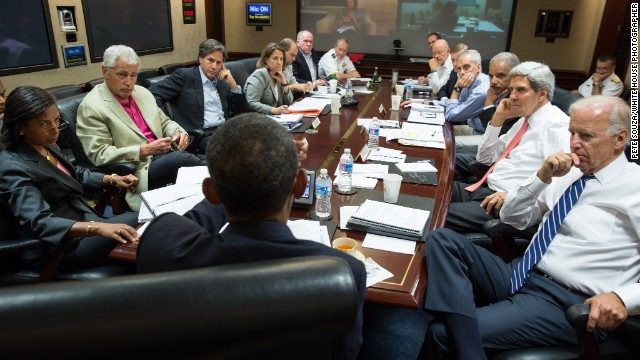The revelation that Hillary had her own email server was a shocker. Then the forced and scheduled production of those emails was another shocker as they were produced. The Trey Gowdy House Benghazi Committee being stonewalled by the Clinton camp and by the State Department was another shocker as compared with Hillary’s own false pledges of cooperation. Several outside organizations have been forced to file FOIA requests and then were forced to file lawsuits for production of those FOIA requests. This is coupled with the subpoenas from the Gowdy commission.
We hear about the server and the emails, but to date, it seems any request for search warrants has been nil. We cannot overlook the fact that Hillary also had and may still have 3 mobile devices, a Blackberry, and iPhone and an iPad. What about the electronic data on those devices or the meta-data trail to either back up the server data or perhaps in addition to that cache the FBI is investigating?
To date, the general conclusion is the FBI is protecting Hillary at the behest of the Justice Department, which hardly seems to be the case. The FBI has assigned their ‘A’ team to this mission and they have a multi-track objective that includes global cyber- espionage, hacking and a meticulous investigation to determine just how many laws were broken beyond the scope of the one or two prevailing violations of protecting classified material. It must be mentioned here that the FBI was also a recipient from the normal intelligence distribution list, so the FBI has their own record of transmissions that went to Hillary and other intelligence or national security personnel.
It would also be a good time as well to include the fact that the Chinese hacked the Office of Personnel management and was able to capture files of all security clearance employees which included Hillary. It is estimate that the OPM hack was determined to have occurred in June of 2014, a year or so after Hillary left her position as Secretary of State, but that OPM hack date is an estimate. Further the depths of the stolen electronic files are still being realized and those numbers are growing exponentially. Were they other known foreign hacks the FBI has open case files on, beyond the OPM intrusion?
This is an important and perhaps a top concern for the FBI, the NSA and associated cyber agencies to determine other possible foreign hacks into Hillary’s electronic files and those of her inner circle personnel. This could in fact be the single reason why the White House or the Obama National Security Council has chosen to defer answers and comments on the Hillary server-gate scandal to either the Department of Justice or the FBI. There is a high probability of a deeper and more threatening security condition of classified material. There could be the likelihood of other cyber intrusions being investigated by the FBI that have not been made public for which Hillary and her team may have been victims.
Anyway, this is hardly a matter that will be solved soon, yet it is a sure bet that almost daily more will bubble to the surface. Meanwhile, Politico has published a fairly good summary as to why Hillary and her lawyers are white knuckled and in panic mode at this moment.
One also cannot omit the entire notion that violations on behalf of Hillary, Bill, Jake Sullivan, Huma Abedin, Cheryl Mills and others at the Clinton Foundation or at the State Department could add to the building nightmares for those mentioned or for the Hillary legal team headed by David Kendall. Mixing government business with a private and global foundation where big big money moved back and forth could be the cherry on the banana split for this building scandal.
Hillary’s FBI nightmare
The next question in the Hillary Clinton email matter is who will force the FBI to release any documents it may have retrieved from the 2016 presidential candidate’s homemade server — Congress or the courts?
The answer: A federal judge may decide to get aggressive and order the law enforcement agency to turn over any newly discovered records or at least preserve them pending further court action. But don’t expect congressional subpoenas to fly — or FBI director James Comey to get hauled to Capitol Hill anytime soon.
Key congressional committees investigating Clinton’s emails argue that the courts are better suited to force the release of federal documents. One GOP source familiar with the investigations said a congressional committee could “theoretically subpoena the FBI” to demand the contents of Clinton’s server, but judges are likely to wade into the issue first.
“I think the court is better positioned right now because of where the cases are in litigation,” the source said.
Court action, however, depends on the aggressiveness of federal judges who are now managing more than 30 Freedom of Information Act cases involving emails on accounts maintained by Clinton or her top aides.
The FBI has already rebuffed one judge’s effort to obtain messages the agency has recovered from Clinton’s server, prompting a stinging attack from Iowa Sen. Chuck Grassley, the Republican chairman of the Senate Judiciary Committee.
On Wednesday, key members of Capitol Hill expressed reluctance to dive in after a report surfaced that the FBI has successfully retrieved messages left on Clinton’s server. The FBI declined to confirm the Bloomberg report Wednesday.
House Benghazi Committee Chairman Trey Gowdy — a former federal prosecutor — made clear through a spokesman that he has no intention to cross swords with the FBI.
“Chairman Gowdy has not asked the FBI about its investigation into Secretary Clinton’s unusual and unprecedented email arrangement, nor has the Bureau offered a briefing to the committee,” Benghazi panel spokesman Jamal Ware said.
“The chairman believes the FBI is the nation’s premier law enforcement agency and he is not willing to comment on its ongoing investigation into the mishandling of classified information in connection with Secretary Clinton’s server.”
Grassley said he was concerned by anonymous leaks cited in the Bloomberg story, noting that the FBI has not responded to congressional inquiries about the investigation.
“You know it is getting a little absurd when someone at the Justice Department is apparently leaking details to the press about an investigation that the department officially refuses to admit to Congress that it is conducting,” Grassley said.
“In light of the details reported in the media, the committee will be seeking more information about the State Department’s attempts to regain possession of the email records that should have remained at the State Department in the first place. The FBI should also provide clarity on how it will handle the emails now that they have been recovered from the server.”
Senate Homeland Security and Government Affairs Committee Chairman Ron Johnson (R-Wis.) said he was “hopeful” that the results of the FBI inquiry will be made public. He promised to press his own inquiry but offered no specifics.
Regardless of what Congress decides to do, Hillary Clinton’s decision to have a tech firm she hired turn the server over to the FBI last month at its request greatly raises the potential that messages she has claimed to be private will eventually make it into the public domain, lawyers tracking the case said. Clinton has said that she had tens of thousands of emails deleted after determining that they contained personal information, but now the FBI appears to have at least some of those in its possession.
“This is enormously significant,” said Dan Metcalfe, a former top Justice Department official handling disclosure issues. “It’s one thing for the bureau to have taken control of the server itself, and when you add to that their technical capabilities to glean information from it, if there is information there that transcends what [Clinton] furnished to State, I think the odds are exceedingly high that that at least some if not all of that information will ultimately enter the public domain.”
While State and the National Archives have determined that about 1,500 of the 30,000 emails Clinton turned over last December are entirely personal records, that determination won’t render those messages or others entirely and indefinitely off limits under the Freedom of Information Act if they turn up in the FBI’s files after being extracted from Clinton’s server, Metcalfe said.
“Those are no longer merely personal records,” said Metcalfe, a former director of Justice’s Office of Information & Privacy who now teaches law at American University. “Anything that the bureau pulls off that server, old messages, new messages, Hillary’s allegedly personal messages, Hillary’s admittedly official records is now an agency record of the bureau’s law enforcement activities.”
Metcalfe said those records could be withheld by the FBI, but once its investigation ends, the documents would have to be processed if requested. That could lead to messages State viewed as entirely personal being published at least in part, he added.
Meanwhile, action continues in the courts. On Monday, the FBI turned down U.S. District Court Judge Emmet Sullivan’s invitation to explain where its investigation stands. The response led Grassley to blast the FBI for “behaving like it’s above the law.”
Sullivan has not yet signaled what other steps he will take, if any. The plaintiff in the case, the conservative group Judicial Watch, could ask the judge to issue a subpoena to the FBI for relevant records. It would be an unusual step and likely lead to legal fireworks.
“A subpoena served upon the FBI will be resisted by the U.S. attorney’s office,” predicted former federal magistrate John Facciola.
At a hearing earlier this month in another case, U.S. District Court Judge Reggie Walton seemed uncomfortable with the idea that Clinton and her attorneys had the final call in determining that over 31,000 emails from her private account were purely personal.
“We’re not sure exactly what type of evaluation was made of that 31,000 messages,” the judge said.
Clinton’s lawyers have argued that government employees generally have the right to determine whether emails or other records are personal and delete them. The Justice Department backed Clinton — to a point — in a recent legal brief, while stopping short of saying that a former government employee such as Clinton has the right to independently make such a determination nearly two years after leaving the government.
Walton said the scenario that played out doesn’t really fit others the courts have previously addressed.
“This is sort of a unique situation,” the judge said. “The State Department never had possession of these records.”
Still, not all judges may be interested in delving into any Clinton files now in the possession of the FBI, particularly if it appears Congress is punting the issue to the courts.
“Congress has different and more powerful ways to obtain information from the State Department than a FOIA plaintiff,” Judge Rosemary Collyer wrote in an order Monday rejecting one group’s arguments that it needed prompt access to Clinton-related emails to aid Congress in getting to the bottom of the Benghazi attacks.
Another challenge for Congress is that it could be disturbing precedent by trying to bring in an outside party to verify that Clinton has turned over all her official emails or even those relevant to the Benghazi attacks. Usually, the recipient of a subpoena turns over what he or she deems responsive, not a broader set of records for someone else to review. “The way we’ve always had is a process of self-production,” Facciola said.
In cases involving search warrants for electronic records, courts have sometimes appointed magistrates to go through the records and sift out what law enforcement really needs. But the question these days is more often about how the computer that does the sorting should be programmed and who gets to decide that.
“That’s the real battle going on,” Facciola said. “Oftentimes, the technicians who create these programs don’t even agree on one methodology. … How do you separate the wheat from the chaff?”



